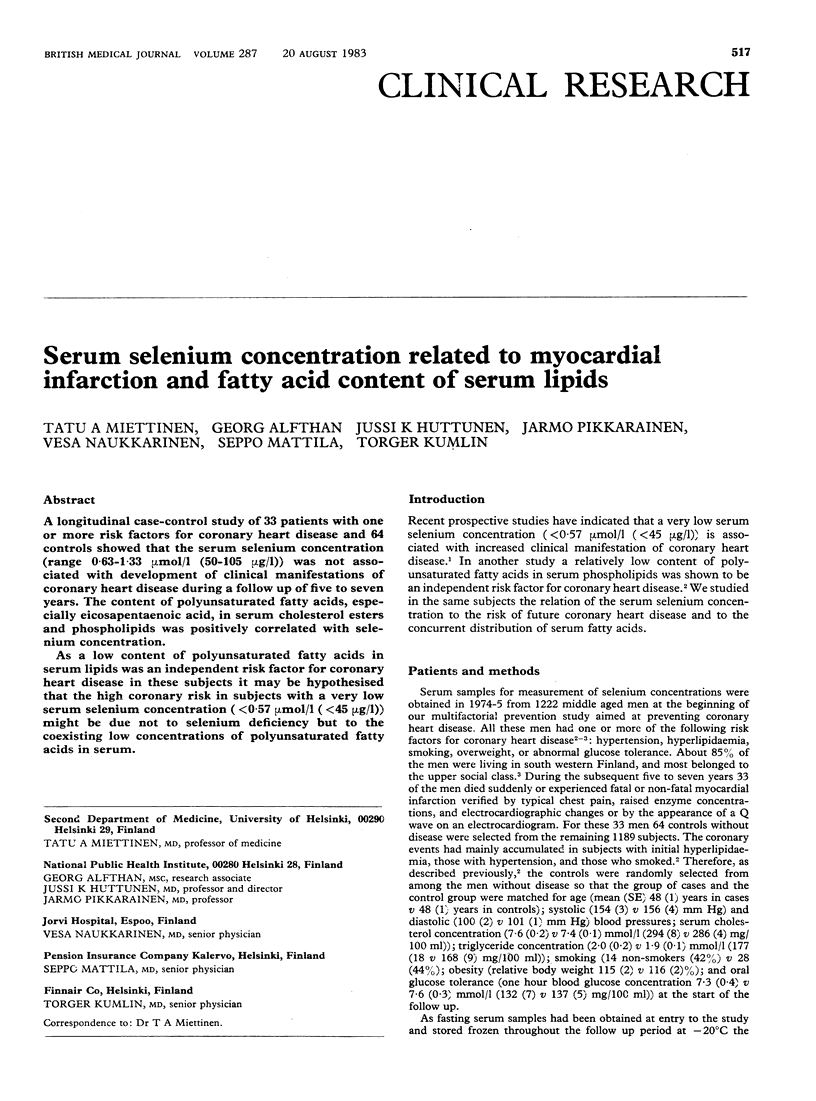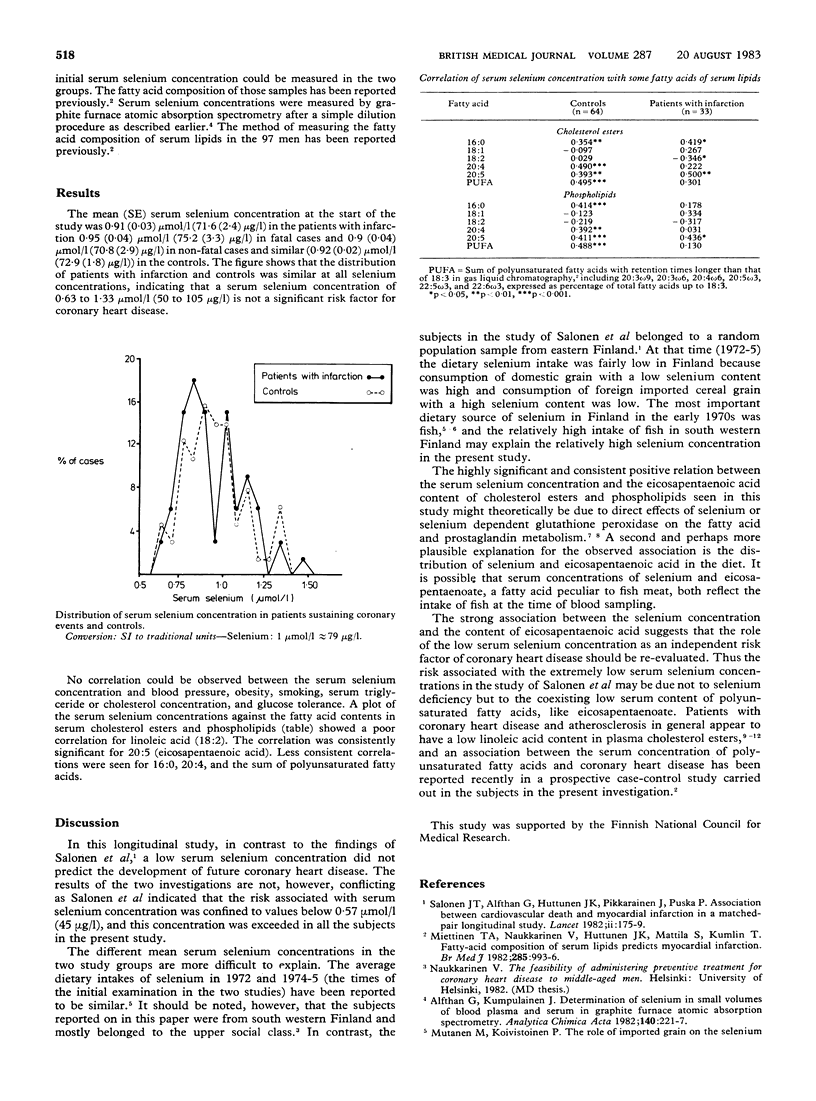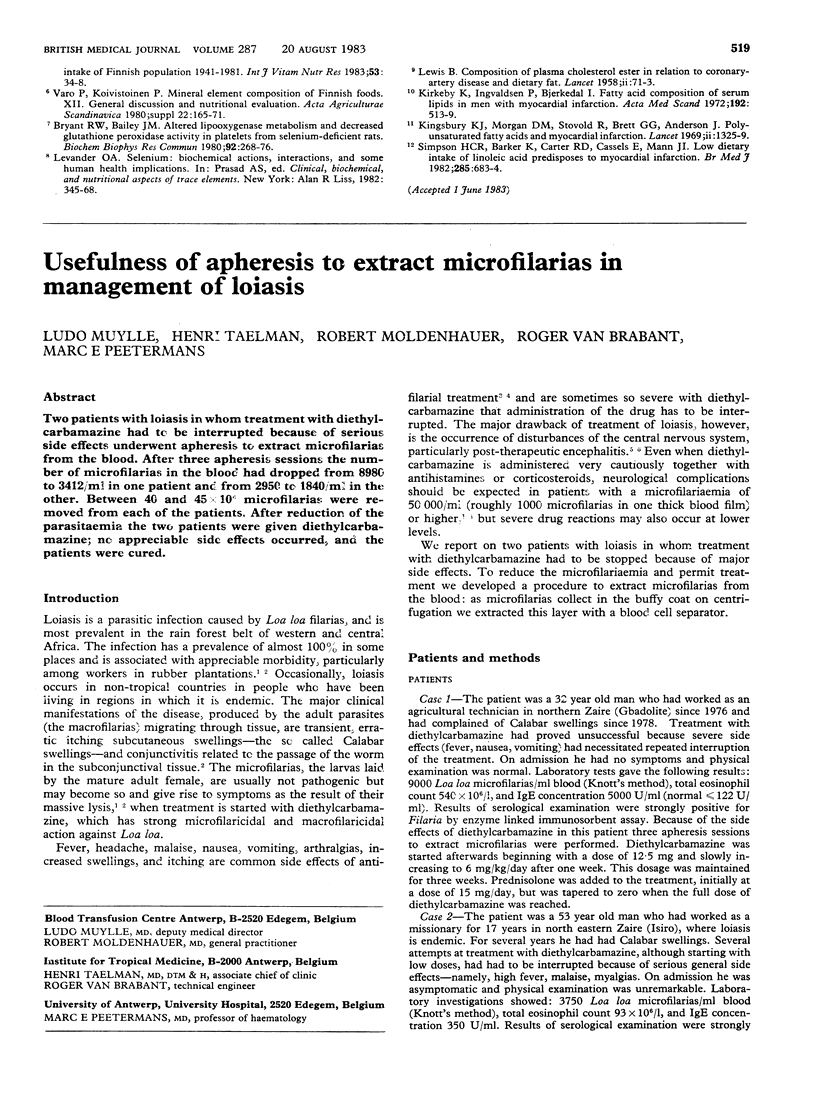Abstract
A longitudinal case-control study of 33 patients with one or more risk factors for coronary heart disease and 64 controls showed that the serum selenium concentration (range 0.63-1.33 mumol/l (50-105 micrograms/l] was not associated with development of clinical manifestations of coronary heart disease during a follow up of five to seven years. The content of polyunsaturated fatty acids, especially eicosapentaenoic acid, in serum cholesterol esters and phospholipids was positively correlated with selenium concentration. As a low content of polyunsaturated fatty acids in serum lipids was an independent risk factor for coronary heart disease in these subjects it may be hypothesised that the high coronary risk in subjects with a very low serum selenium concentration (less than 0.57 mumol/l (less than 45 micrograms/l] might be due not to selenium deficiency but to the coexisting low concentrations of polyunsaturated fatty acids in serum.
Full text
PDF


Selected References
These references are in PubMed. This may not be the complete list of references from this article.
- Bryant R. W., Bailey J. M. Altered lipoxygenase metabolism and decreased glutathione peroxidase activity in platelets from selenium-deficient rats. Biochem Biophys Res Commun. 1980 Jan 15;92(1):268–276. doi: 10.1016/0006-291x(80)91548-x. [DOI] [PubMed] [Google Scholar]
- Kingsbury K. J., Morgan D. M., Stovold R., Brett C. G., Anderson J. Polyunsaturated fatty acids and myocardial infarction. Follow-up of patients with aortoiliac and femoropopliteal atherosclerosis. Lancet. 1969 Dec 20;2(7634):1325–1329. doi: 10.1016/s0140-6736(69)90864-2. [DOI] [PubMed] [Google Scholar]
- Kirkeby K., Ingvaldsen P., Bjerkedal I. Fatty acid composition of serum lipids in men with myocardial infarction. Acta Med Scand. 1972 Dec;192(6):513–519. doi: 10.1111/j.0954-6820.1972.tb04857.x. [DOI] [PubMed] [Google Scholar]
- LEWIS B. Composition of plasma cholesterol ester in relation to coronary-artery disease and dietary fat. Lancet. 1958 Jul 12;2(7037):71–73. doi: 10.1016/s0140-6736(58)91243-1. [DOI] [PubMed] [Google Scholar]
- Miettinen T. A., Naukkarinen V., Huttunen J. K., Mattila S., Kumlin T. Fatty-acid composition of serum lipids predicts myocardial infarction. Br Med J (Clin Res Ed) 1982 Oct 9;285(6347):993–996. doi: 10.1136/bmj.285.6347.993. [DOI] [PMC free article] [PubMed] [Google Scholar]
- Salonen J. T., Alfthan G., Huttunen J. K., Pikkarainen J., Puska P. Association between cardiovascular death and myocardial infarction and serum selenium in a matched-pair longitudinal study. Lancet. 1982 Jul 24;2(8291):175–179. doi: 10.1016/s0140-6736(82)91028-5. [DOI] [PubMed] [Google Scholar]
- Simpson H. C., Barker K., Carter R. D., Cassels E., Mann J. I. Low dietary intake of linoleic acid predisposes to myocardial infarction. Br Med J (Clin Res Ed) 1982 Sep 11;285(6343):683–684. doi: 10.1136/bmj.285.6343.683. [DOI] [PMC free article] [PubMed] [Google Scholar]


